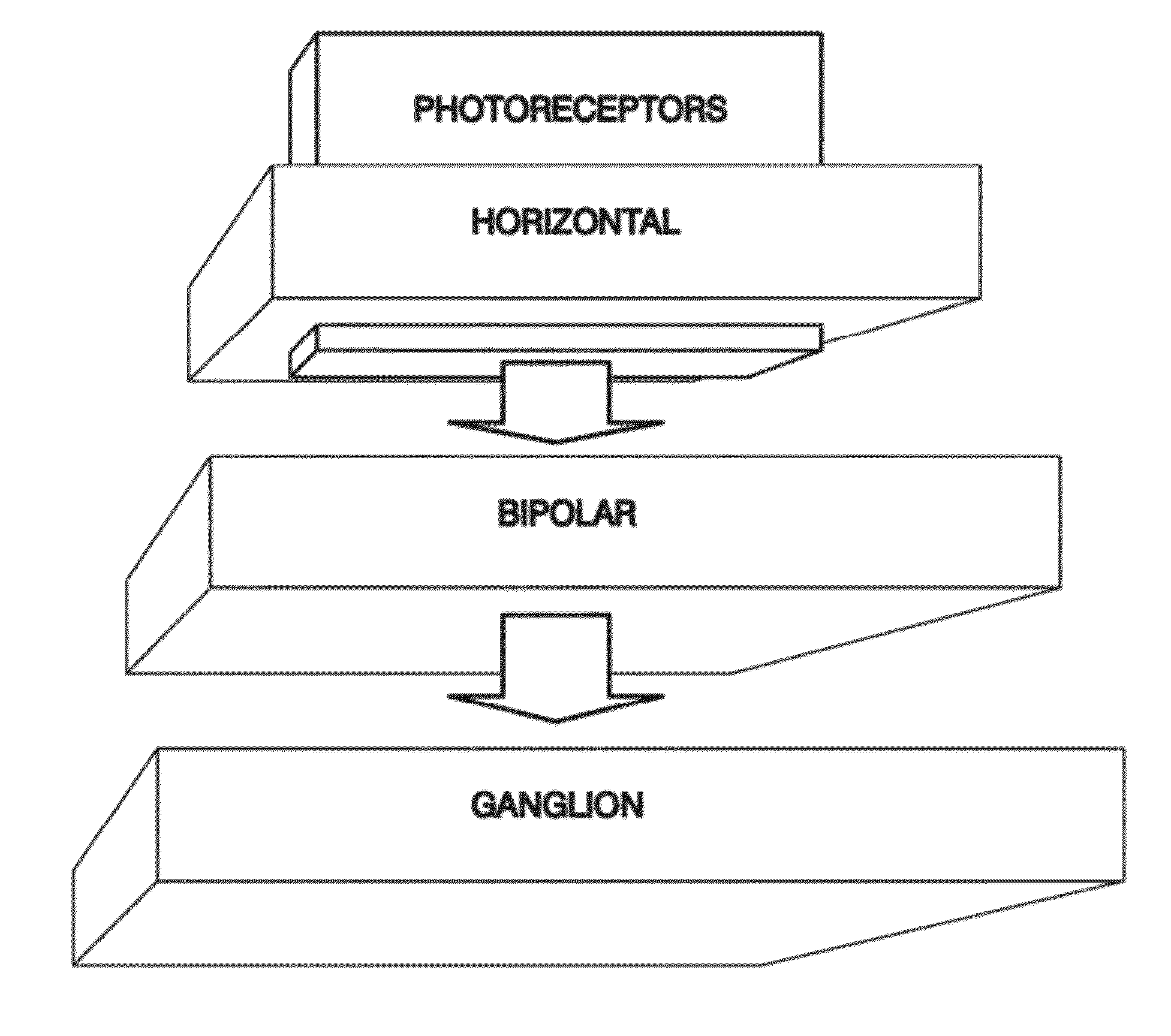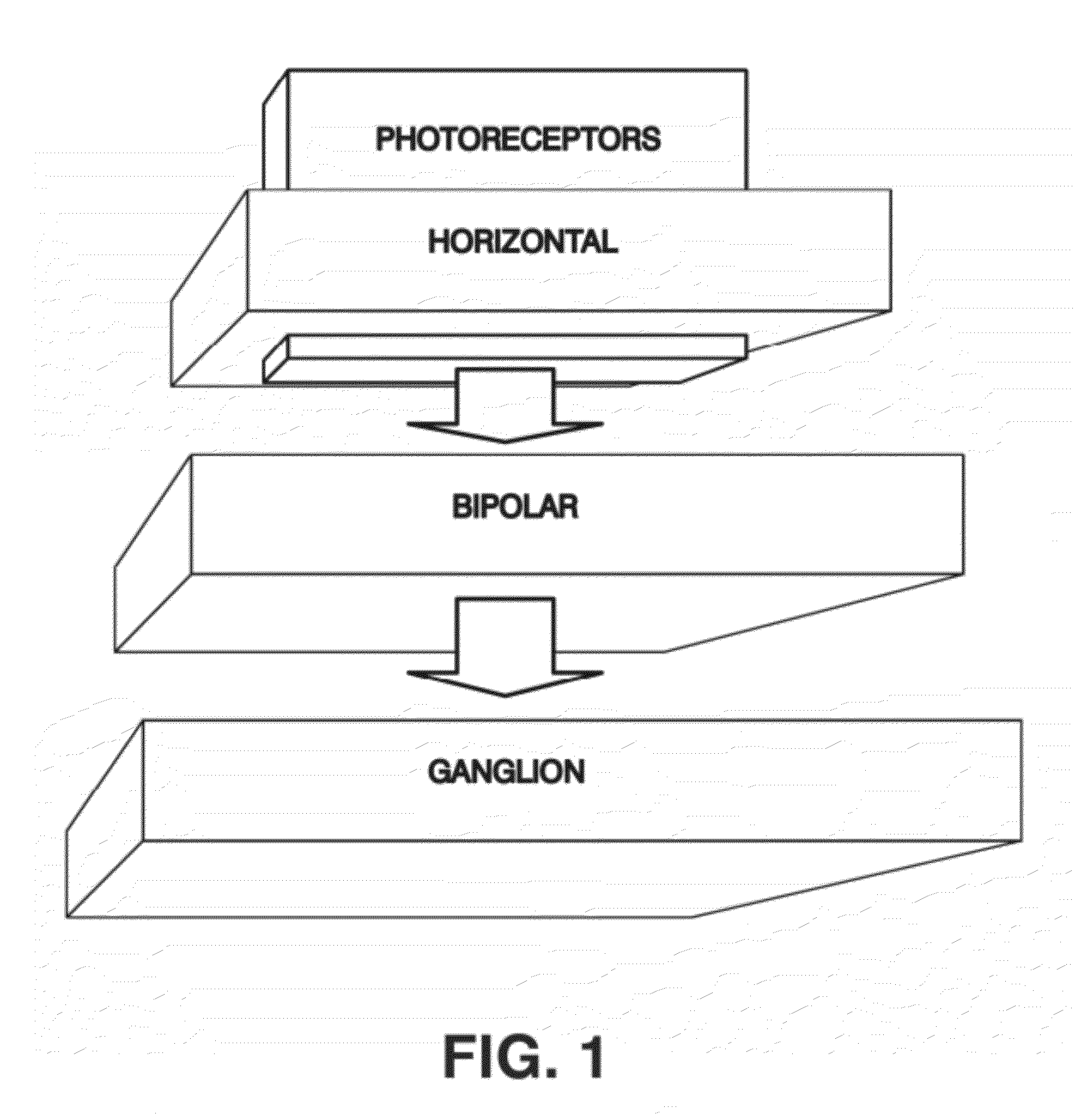Bioinspired System for Processing and Characterising Colour Attributes of a Digital Image
- Summary
- Abstract
- Description
- Claims
- Application Information
AI Technical Summary
Benefits of technology
Problems solved by technology
Method used
Image
Examples
Embodiment Construction
[0055]The present invention aims to overcome the inconveniences of the aforementioned state of the art by means of a bioinspired system for processing colour attributes of images, that can be implemented in a computer, with an ordered architecture that emulates the functions of photoreceptors, horizontal cells, bipolar cells and ganglion cells of a primate retina, from an original digital image received by means of data input, analyses the image, detects the original image's colour attributes providing a defined data output for each pixel of the original digital image made up of representative data of the colour attributes of the original image, characterised in that
[0056]it comprises a plurality of emulators that make up a virtual retina where each emulator has a cellular base structure with a modulated data input, a calculation centre to process the modulated data and an output of the data processed by the calculation centre;
[0057]each emulator is parametrised by[0058]a first para...
PUM
 Login to View More
Login to View More Abstract
Description
Claims
Application Information
 Login to View More
Login to View More - R&D
- Intellectual Property
- Life Sciences
- Materials
- Tech Scout
- Unparalleled Data Quality
- Higher Quality Content
- 60% Fewer Hallucinations
Browse by: Latest US Patents, China's latest patents, Technical Efficacy Thesaurus, Application Domain, Technology Topic, Popular Technical Reports.
© 2025 PatSnap. All rights reserved.Legal|Privacy policy|Modern Slavery Act Transparency Statement|Sitemap|About US| Contact US: help@patsnap.com



